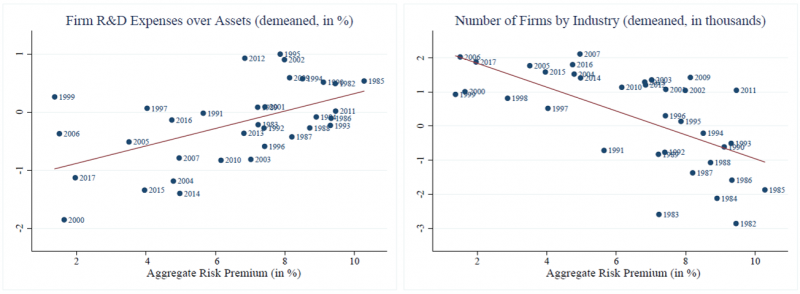References
Babina, T., Bernstein, A., and Mezzanotti, F. (2023). Financial Disruptions and the Organization of Innovation: Evidence from the Great Depression. Review of Financial Studies, Forthcoming.
Barlevy, G. (2007). On the Cyclicality of Research and Development. American Economic Review 97, pp. 1131-1164.
Brown, J., Fazzari, S., and Petersen, B. (2009). Cash Flow, External Equity, and the 1990s R&D Boom. Journal of Finance 64, 151-185.
Bustamante, M.C., and Zucchi, F. (2023). Innovation, Industry Equilibrium, and Discount Rates. ECB Working paper No. 2835.
Comin, D., and Gertler, M. (2006). Medium-term Business Cycles. American Economic Review 96, pp. 523-551.
Griliches, Z. (1984). Patent Statistics as Economic Indicators: A Survey. In R&D and Productivity: The Economic Evidence, pp. 287-343.
Haddad, V., Loualiche, E., and Plosser, M. (2017). Buyout Activity: The Impact of Aggregate Discount Rates. Journal of Finance 72, 371-414
Manso, G., Balsmeier, B., and Fleming, L. (2021). Heterogeneous Innovation over the Business Cycle. Review of Economics and Statistics 1-50.





